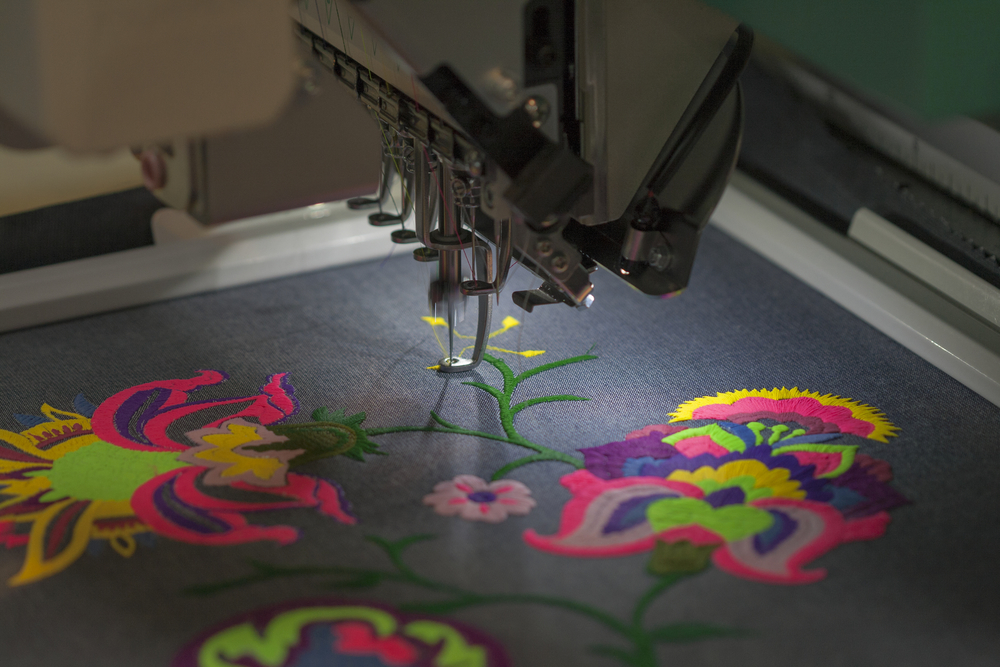Premier Digitizing for Embroidery: Perfect Stitch Every Time
Wiki Article
Discover Different Kinds Of Embroidery Digitizing Techniques
Needlework digitizing has evolved considerably throughout the years, using a myriad of methods to bring designs to life in the digital realm. From the detailed creativity of conventional hand needlework digitizing to the precision of the boxing method, and the ease of auto-digitizing software application programs, the choices are large. Furthermore, the realm expands to advanced methods like photorealistic embroidery digitizing and the remarkable realm of 3D embroidery digitizing. Each technique brings a special set of possibilities and challenges to the table, making the expedition of these techniques an engaging trip for those in the embroidery world.Conventional Hand Embroidery Digitizing
Conventional hand embroidery digitizing involves the process of converting complex hand-stitched styles right into electronic layouts for machine embroidery. This method needs skilled artisans to carefully examine the handmade design and then use specialized software program to recreate it in an electronic layout. Each stitch, color, and information has to be thoroughly converted to ensure that the essence of the original hand embroidery is preserved in the digital variation.Among the vital challenges of standard hand needlework digitizing is recording the details and subtleties of the handmade layout. Digitizing for Embroidery. Craftsmens need to have a deep understanding of different embroidery strategies, such as satin stitch, chain stitch, and French knots, to properly replicate these techniques in the electronic realm. In addition, they need to have a keen eye for information to guarantee that the electronic style maintains the very same level of virtuosity and craftsmanship as the original hand-stitched item
Punching Technique
To seamlessly change from standard hand embroidery digitizing to the boxing method, artisans need to now concentrate on converting the complex digital styles into directions that embroidery makers can analyze. The punching strategy involves making use of specialized software application to develop digital documents that include commands for the needlework device to adhere to. This process needs a deep understanding of not just the style itself yet also the abilities and limitations of the needlework device.
Auto-Digitizing Software Program Programs
Needlework digitizing has been transformed by the development of auto-digitizing software application programs, giving craftsmens with advanced devices to transform digital styles into embroidery device directions efficiently. Auto-digitizing software application programs use algorithms to examine digital pictures useful site or vector files and generate needlework layouts instantly. These programs enable fast and precise conversion of elaborate designs into stitch patterns, conserving effort and time for embroiderers.
Among the crucial advantages of auto-digitizing software is its user-friendly interface, making it obtainable to both newbies and seasoned digitizers. These programs commonly consist of features such as stitch editing devices, thread color matching, and the capacity to sneak peek the final stitched style. Furthermore, auto-digitizing software can take care of intricate styles with multiple shades and complex details, producing high-grade needlework files suitable for numerous clothing and textile tasks.
While auto-digitizing software application provides ease and effectiveness, it is necessary for individuals to understand the constraints of automated digitizing. Fine-tuning and hand-operated modifications may still be needed to accomplish the desired needlework quality, specifically when managing elaborate or unique layouts. By leveraging the capacities of auto-digitizing software application alongside hand-operated digitizing strategies, artisans can boost their embroidery digitizing procedure and develop sensational stitched pieces.
Photorealistic Needlework Digitizing
Making use of advanced electronic imaging strategies, achieving photorealistic cause needlework digitizing has ended up being a desired skill among modern-day artisans. This technique entails transforming high-resolution images right into detailed stitch patterns that closely simulate the initial design, leading to needlework items that display natural information and depth.To accomplish photorealistic needlework digitizing, craftsmens should have an eager eye for detail and a thorough understanding of exactly how various stitch kinds and densities can impact helpful hints the final result. By meticulously drawing up each color and color in the photo, embroiderers can produce an electronic data that guides the needlework equipment to duplicate the subtleties of the original photo accurately.
Photorealistic site embroidery digitizing is specifically prominent in developing customized layouts for clothing, home style, and art pieces where recording the essence of a photo or art work is essential. This technique enables craftsmens to change memories, landscapes, pictures, and detailed art work right into stunning stitched work of arts that showcase a blend of traditional craftsmanship and innovative innovation.
3D Needlework Digitizing
With the improvement of digital imaging strategies in accomplishing photorealistic results in needlework digitizing, the expedition of 'D Embroidery Digitizing' supplies a brand-new dimension to the complexities of design duplication. 'D Needlework Digitizing' describes the three-dimensional digitizing strategy that adds depth and texture to needlework layouts, producing a more realistic and aesthetically attractive final item. This method uses software program that replicates the effect of light and darkness on the embroidery layout, boosting its overall aesthetic effect.One of the crucial benefits of 'D Needlework Digitizing' is its capability to make designs look even more lifelike and vibrant. By adding deepness to the embroidery style, the final item appears a lot more reasonable and captivating (Digitizing for Embroidery). In addition, this technique permits for more imaginative freedom in layout execution, making it possible for embroiderers to trying out different appearances and effects that were formerly challenging to accomplish
Verdict

Report this wiki page